|
|
|
|
News The Project Technology RoboSpatium Contribute Subject index Download Responses Games Gadgets Contact <<< EDM: Active Hammer (2) Plastic powder (1) >>> Plastic recycling with a blenderThe video about turning waste plastic into granulesCrushing failed prints in a blender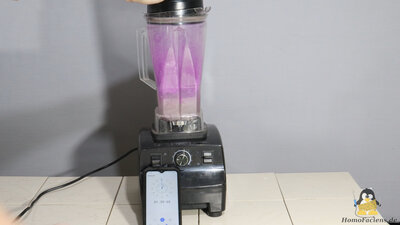
To turn my failed prints into new granules, I use a blender. Let's take a closer look at what happens inside: A fast rotating blade hits the parts inside the container. Due to the inertia of the plastic parts, chips are removed by the blade. Large parts are broken down piece by piece ending up as small chips. The efficiency of this process depends heavily on the size of the parts in the blender and on the amount of plastic filled in. 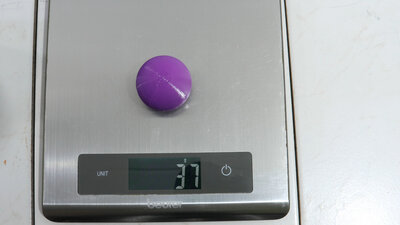
For a first attempt I am using a single, solid PLA ball with a diameter of 40mm and a weight of 37g. This is put into the blender and the device is switched on. The container must be held firmly in place during the process, otherwise the lid would be thrown away by the ball being thrown up again and again. 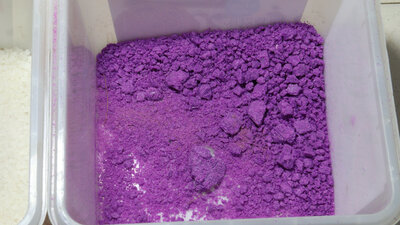
From the original 40mm diameter sphere, only irregularly shaped splinters with diameters of no more than 15mm down to dust-like particles remain after 2 minutes in the blender. 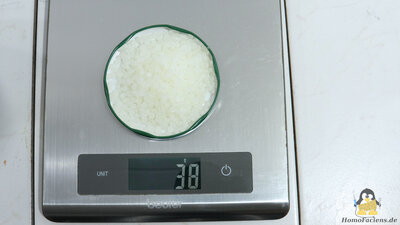
As second experiment, approximately same mass of industrially produced PLA pellets is put in the blender. The pellets have a diameter of around 4 to 5mm. 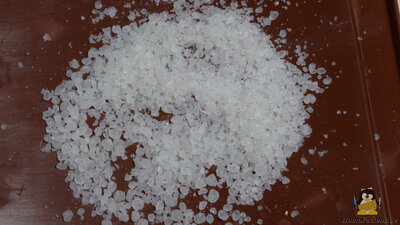
Although much smaller grains were initially in the container using the industrial granules as a starting point, this material was not really ground into finer dust than was the case with the single, large sphere. Some of the pellets appear as if no material at all had been removed from them. 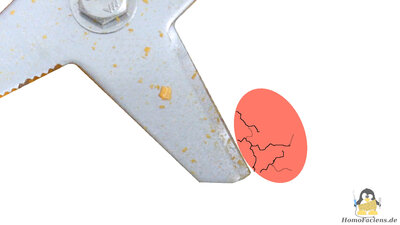
In the blender, the particles collide with the rapidly rotating blade, with different forces acting on particles of different weights over different periods of time: The particles are accelerated by the blade and the following applies: the lighter the object, the faster the different speeds of the blade tip and particle equalize. However, material can only be removed from a particle as long as the blade moves much faster than the object being hit, because only then does a high force act between the steel of the blade and the plastic surface of the particle. Plastic is not ideally hard, which means that the particles initially deform slightly and thus compensate for the force effect. Only when this elastic deformation is no longer sufficient to compensate for the impacting force does plastic deformation occur and ultimately the desired cracks appear in the material. A lot of material is removed from large particles, less from small ones, as they are accelerated almost immediately and with a lower force to the speed of the blade tip. There is even a minimum particle size or a minimum mass for the grains beyond which no further material can be removed by the blade. Furthermore, grinding with a blender is a statistical process, because at what angle and at what speed the particles and the blade collide is ruled by chance. A particle with a given mass and diameter does not always have the same chip size cut off. 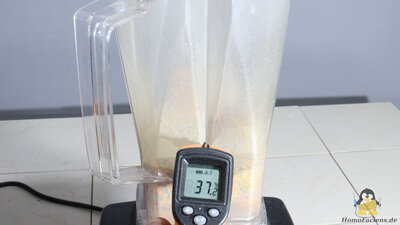
The fill level of the blender must not be too high, because the objects to be chopped must be able to fly around in the container so that the material to be crushed is constantly mixed well. For the same reason, too large objects should not be placed in the container. Friction occurs both when material is knocked off by the blade and when the particles collide with one another, converting kinetic energy into heat. After 2 minutes, the material warms up from an initial 13°C to over 35°C, so the blender must not be operated for too long at a time, as PLA begins to soften at around 40°C. Another reason not to run the blender for much longer than 2 minutes at a time is that the very small particles have a dampening effect on the collision of blade and particles. The efficiency of the grinding process therefore decreases as the time progresses. 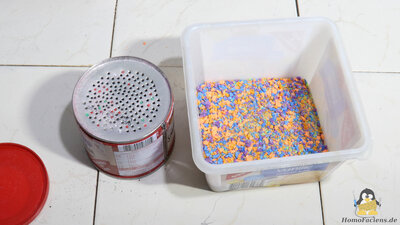
A look at the contents of the blender shows that only the minor part of the material is smaller than the required 2mm. It is therefore important to separate the particles that are too large from the desired small particles and this can be done with a sieve: I drilled 2mm holes in the bottom of the can. All particles that are too large go back into the blender. Additionally, more plastic scrap is added to the container. If small particles get between the blade and a larger object, these small parts will also be effectively smashed. Thus, having a few large pieces in the blender increases the efficiency of the grinding process. 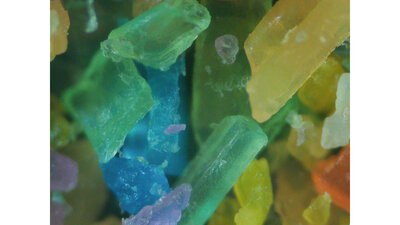
A look at the sieved end product under the microscope shows that there are many grains with a diameter much smaller than 2mm. However, this is not a disadvantage, but rather a great advantage, because the extruder needs the raw material to be packed as densely as possible in order to function well: The finer the extruder has to feed the plastic in order to be able to print fine structures, the smaller the hole for the extruder's screw conveyor and thus also the particles of the raw material have to be. 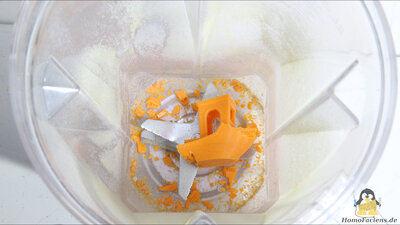
In addition to the material being ground, the grinder is also maltreated, so small metal chips can get into the end product. It can also be seen that the blender container becomes cloudy over time because material is ground away from the walls and thus also ends up in the final product. Furthermore, there is also a bit of glue in my mountain of failed prints, which served as an adhesion agent to the print bed, and a little dust has also gotten in over the years. You will therefore never be able to process recycled material with a 0.2mm nozzle, but good 3D prints can also be made with 0.5 or even 1.0mm nozzles. It should also be noted that the very fine particles created in the blender stick almost everywhere due to electrostatic interaction. It is therefore advisable to take a certain amount of care when processing waste plastic, because you should not inhale the fine dust in excess - a sealed sieve makes sense. <<< EDM: Active Hammer (2) Plastic powder (1) >>> News The Project Technology RoboSpatium Contribute Subject index Archives Download Responses Games Links Gadgets Contact Imprint |
|
|